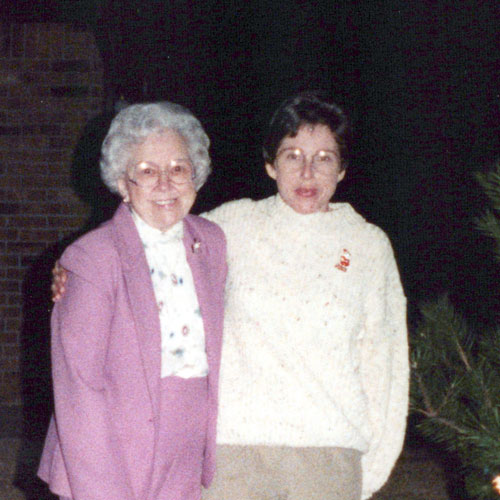

1939
A visionary on a mission
to care for others.
A visionary on a mission to care for others.
Throughout her life, Betty Wunder subscribed to the belief ‘It’s not how close you get, but the angle at which you look’. Her unique ability to uncover truth by finding the right angle guided not only how she approached her field of diagnostic radiology, but how she lived her life.
As a female pioneer in her field, Betty was instrumental in elevating diagnostic imaging procedures for children – not only making them safer, but ensuring children had the best possible technology and care available. The Betty Wunder Memorial Foundation was founded in her honor, to help future change-makers in the world of radiology pursue their education and carry on Betty’s legacy of improving diagnostic care in Oklahoma.




In the late 1950s, Betty
began pursuing her education
in radiology in Memphis.
In the late 1950s, Betty began pursuing her education in radiology in Memphis.



Betty earns her radiologic technology certificate, followed by special procedure radiologic technology certification from the University of Tennessee Medical Unit.





1958
Charting the path to lifelong
teacher and trailblazer.
Charting the path to lifelong teacher and trailblazer.


Betty combines her passion for learning with her technical aptitude at her first radiology job, working as an instructor and Staff Technologist at John Gaston Hospital. Never one to shy away from a good challenge, Betty also spent this time as a radiologic positioning and anatomy instructor at University of Tennessee.
Betty works as a staff technologist at Sandera Clinic.

Making major moves as
a female in her field.
Making major moves as a female in her field.
Betty becomes Chief Technologist at the
Tennessee Psychiatric Hospital Research Institute.
Her journey to master her field continues in
Memphis with a Shelby County Civil Defense
Commission certificate in radiological monitoring.



play hard.”

1971
Pediatric radiology
earns a change-maker.
Pediatric radiology earns a change-maker.



Betty makes Children's
Hospital her home.
Betty makes Children's Hospital her home.

What is now known as Children’s Hospital, in Oklahoma City, welcomes Betty’s discerning eye and exemplary skills as staff technologist.
Betty spent the majority of her career at Children’s, advocating for young patients, building a culture of excellence and inclusion, and ultimately making her mark in her field far beyond Oklahoma state lines.


Forever a lover
of learning.
Betty implements changes in the level of radiation children receive during scans – a trailblazing moment in her field – and sets the new standard for pediatric radiologic care.
Betty becomes Assistant Chief Technologist
at Children’s, and grows her team to be one
of the top pediatric diagnostic radiology teams in the state.


seeing what’s next.”
1974

Shaping the minds of
future radiologists.
Shaping the minds of future radiologists.
To say Betty was ambitious would be putting it lightly. Throughout her career as a technologist, she also taught the next generation of radiologists as Special Instructor - Clinical Pediatric Radiography at Children’s.
From 1974-1975 Betty expanded her skill set by earning her emergency medical technician certification from Edmond Memorial Hospital, in Edmond, Oklahoma, and her continuing education multidirectional tomography certification from Oklahoma Society of Radiologic Technologists.
Betty brings MRI to
Oklahoma in 1983.
Betty might’ve retired from her position at Children’s in 1994, but she was present in the lives of all those she touched – from her employees to those she committed to in the community and beyond – through her final days.




2022
Honoring a legacy.
To honor the life and legacy of Betty Wunder – and support a new generation following in her footsteps – the Betty Wunder Foundation is formed.













